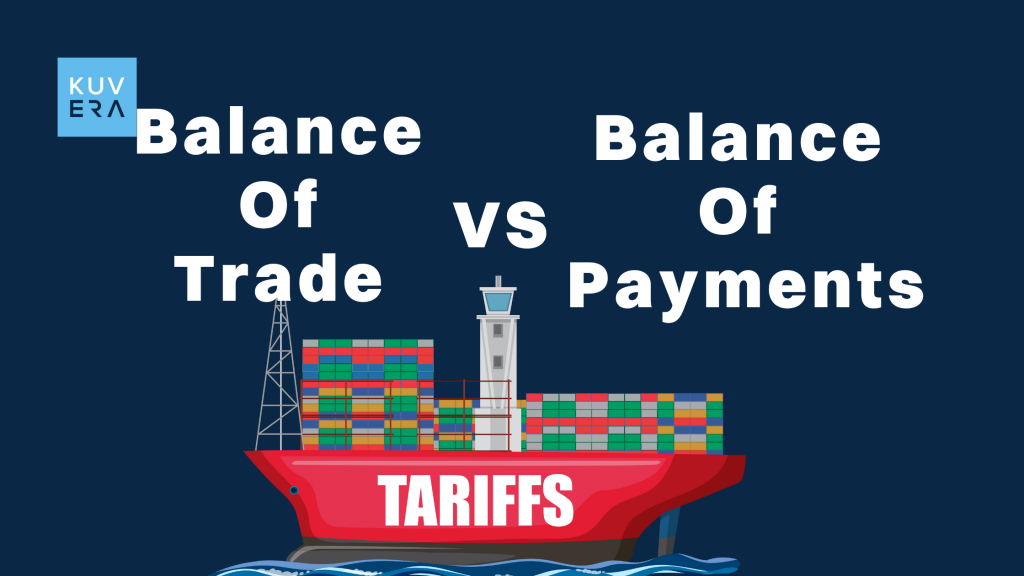Two terms frequently surface when discussing a nation’s international financial standing: the Balance of Trade (BOT) and the Balance of Payments (BOP). These are often used in conjunction and are indeed related. They represent distinct aspects of a country’s economic interactions with the rest of the world. Grasping the difference between balance of trade and balance of payment is crucial for anyone seeking to understand a nation’s economic health, its competitiveness in the global market, and the overall flow of funds across its borders.
You can think of a country’s economic engagement with the world as a comprehensive ledger. The difference between balance of trade and balance of payment lies in the scope of transactions each ledger captures. The Balance of Trade offers a focused snapshot of a nation’s earnings from exports and expenditures on imports of tangible goods (and sometimes services), whereas the Balance of Payment presents a much broader picture, encompassing all economic transactions between a country’s residents and the rest of the world over a specific period, typically a year. This detailed exploration will illuminate the nuances of each concept and underscore the significance of understanding the difference between balance of trade and balance of payment.
Defining Balance of Trade and Balance of Payments
Balance of Trade
The Balance of Trade, often referred to as the “trade balance” or “net exports,” represents the difference in monetary value between a country’s total exports and its total imports of goods over a specific period. It essentially measures the net flow of tangible goods across a nation’s borders.
The formula for calculating the Balance of Trade is straightforward:
Balance of Trade = Value of Exports – Value of Imports
A positive BOT, where the value of exports exceeds the value of imports, indicates a trade surplus. This suggests that the country is a net exporter of goods. Conversely, a negative BOT, where the value of imports surpasses the value of exports, signifies a trade deficit, implying that the country is a net importer of goods. While the official definition primarily focuses on goods, some analyses might include services in the calculation of the BOT. The Balance of Trade is a key component of a nation’s current account, which, as will be discussed later, forms a part of the broader Balance of Payments. Understanding the nuances of a nation’s trade balance provides insights into its manufacturing competitiveness and its reliance on foreign goods.
Balance of Payment
The Balance of Payment (BOP) offers a far more comprehensive record of all economic transactions between the residents of one country and the residents of the rest of the world over a specific period, usually one year. It acts as a systematic summary of all inflows and outflows of money. The difference between balance of trade and balance of payment becomes apparent when one examines the various components that constitute the BOP.
The BOP is typically divided into three main accounts. These are as follows:
- Current Account: This account records the flow of goods, services, income (from investments and compensation of employees), and current transfers (like foreign aid and remittances). The Balance of Trade is a significant part of the current account, specifically falling under the goods and services component.
- Capital Account: This account primarily deals with capital transfers and the acquisition or disposal of non-produced, non-financial assets (such as patents, copyrights, and trademarks). It is relatively smaller compared to the current and financial accounts.
- Financial Account: This account records transactions involving financial assets and liabilities between residents and non-residents. It includes foreign direct investment (FDI), portfolio investment (in stocks and bonds), loans, and changes in a country’s official reserve assets (like foreign currency holdings and gold).
The fundamental principle of the Balance of Payments is that, under a double-entry bookkeeping system, every credit (inflow of money) must be offset by a debit (outflow of money). Therefore, in theory, the total balance of payments should always equal zero. However, in practice, due to statistical discrepancies and timing differences in recording transactions, a “net errors and omissions” item is often included to balance the accounts. The difference between balance of trade and balance of payment is stark when considering the breadth of transactions captured by the BOP, extending far beyond the simple exchange of goods.
Unraveling the Difference between Balance of Trade and Balance of Payments
While both the Balance of Trade and the Balance of Payments are vital indicators of a nation’s international economic interactions, several key distinctions set them apart:
- Scope of Transactions: This is the most fundamental difference between balance of trade and balance of payment. The BOT focuses narrowly on the import and export of goods (and sometimes services), whereas the BOP encompasses all economic transactions, including trade in goods and services, income flows, unilateral transfers, and capital and financial flows.
- Components Included: The BOT essentially represents one component (primarily goods, sometimes including services) within the broader Current Account of the BOP. The BOP, on the other hand, includes the Current Account, the Capital Account, and the Financial Account.
- Nature of Transactions: The BOT primarily deals with the exchange of real goods and services. The BOP includes not only these but also financial transactions involving assets and liabilities, as well as transfer payments that do not involve an exchange of goods or services.
- Overall Balance: The Balance of Trade can be in surplus, deficit, or balanced. The overall Balance of Payment, in theory, should always balance out to zero due to the double-entry accounting system, although individual accounts (current, capital, financial) can have surpluses or deficits.
- Economic Implications: A trade deficit might suggest a lack of competitiveness in a nation’s manufacturing sector or high domestic consumption exceeding production. A BOP deficit, however, indicates a broader issue where the outflow of funds exceeds the inflow from all international economic activities, potentially leading to concerns about a nation’s external financial stability. Conversely, a BOP surplus suggests a net inflow of funds. Understanding the difference between balance of trade and balance of payment allows for a more nuanced interpretation of a nation’s economic standing.
Understanding the Significance of Each Measure
Both the Balance of Trade and the Balance of Payments offer valuable insights into a country’s economic health and its interactions with the global economy. However, they provide different perspectives and are relevant for different types of analysis.
The Balance of Trade is a crucial indicator of a nation’s competitiveness in international trade. A persistent trade surplus can suggest a strong export sector and efficient domestic production. Conversely, a sustained trade deficit might indicate a reliance on foreign goods, potentially impacting domestic industries and employment in the long run. Policymakers often monitor the trade balance to assess the need for measures to boost exports or manage imports.
The Balance of Payments provides a more holistic view of a country’s international financial position. It reveals not only the trade in goods and services but also how the country finances its international transactions through capital and financial flows. A deficit in the current account, for instance, might be offset by a surplus in the financial account, indicating that the country is attracting sufficient foreign investment to cover its trade imbalances. However, a persistent deficit in both the current and financial accounts could signal underlying economic weaknesses.
Furthermore, the composition of the financial account provides valuable information about the nature of capital flows. For example, a large influx of foreign direct investment is generally viewed more favorably than a reliance on short-term debt. The difference between balance of trade and balance of payment highlights that while the BOT focuses on the real economy (goods and services), the BOP also captures the financial flows that underpin these transactions and reflect broader investor sentiment and economic stability.
It is important to recognise that while there is a clear difference between balance of trade and balance of payment, the former is a significant component of the latter. The Balance of Trade directly impacts the current account balance, which, in turn, influences the overall Balance of Payments.
For example, if a country has a large trade deficit (imports exceed exports), this will contribute to a negative current account balance. To finance this deficit, the country will likely need to have a surplus in its capital or financial account, attracting inflows of foreign capital. This interplay demonstrates the interconnectedness of the various components of the BOP and underscores why analysing the BOP provides a more complete picture of a nation’s international financial standing than simply looking at the trade balance in isolation. Understanding this relationship is key to appreciating the full difference between balance of trade and balance of payment.
Wrapping up!
In conclusion, while both the Balance of Trade and the Balance of Payments serve as vital barometers of a nation’s economic interactions with the rest of the world, they differ significantly in their scope and the types of transactions they encompass. The Balance of Trade offers a focused view on the exchange of goods (and sometimes services), highlighting a nation’s trade competitiveness. The Balance of Payment, on the other hand, provides a comprehensive overview of all economic transactions, including trade, income flows, transfers, and capital and financial movements.
Grasping the difference between balance of trade and balance of payment is essential for policymakers, economists, investors, and anyone seeking a deeper understanding of international economics. The difference between balance of trade and balance of payment is not merely a matter of definition. It reflects the multifaceted nature of international economic relations and the various channels through which nations interact financially.
Interested in how we think about the markets?
Read more: Zen And The Art Of Investing
Watch here: Learn about the F&O craze in India

